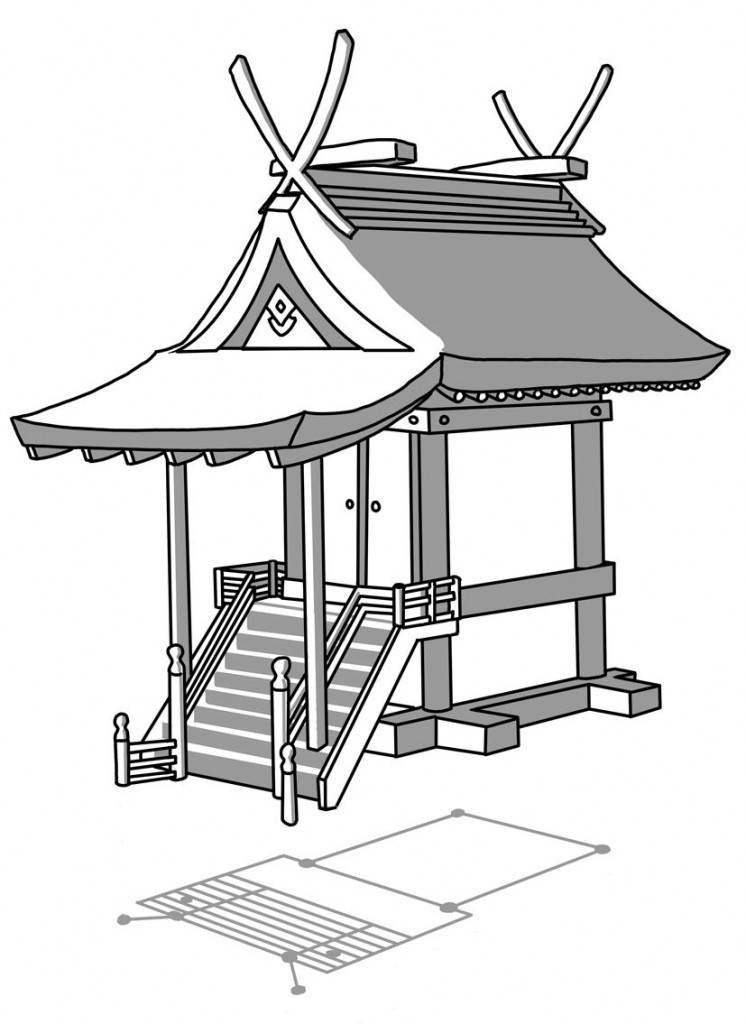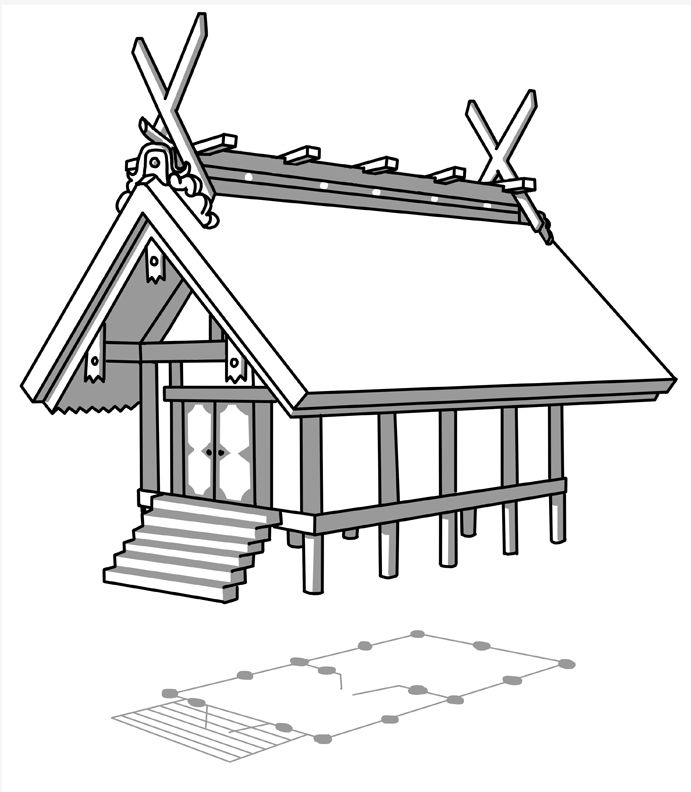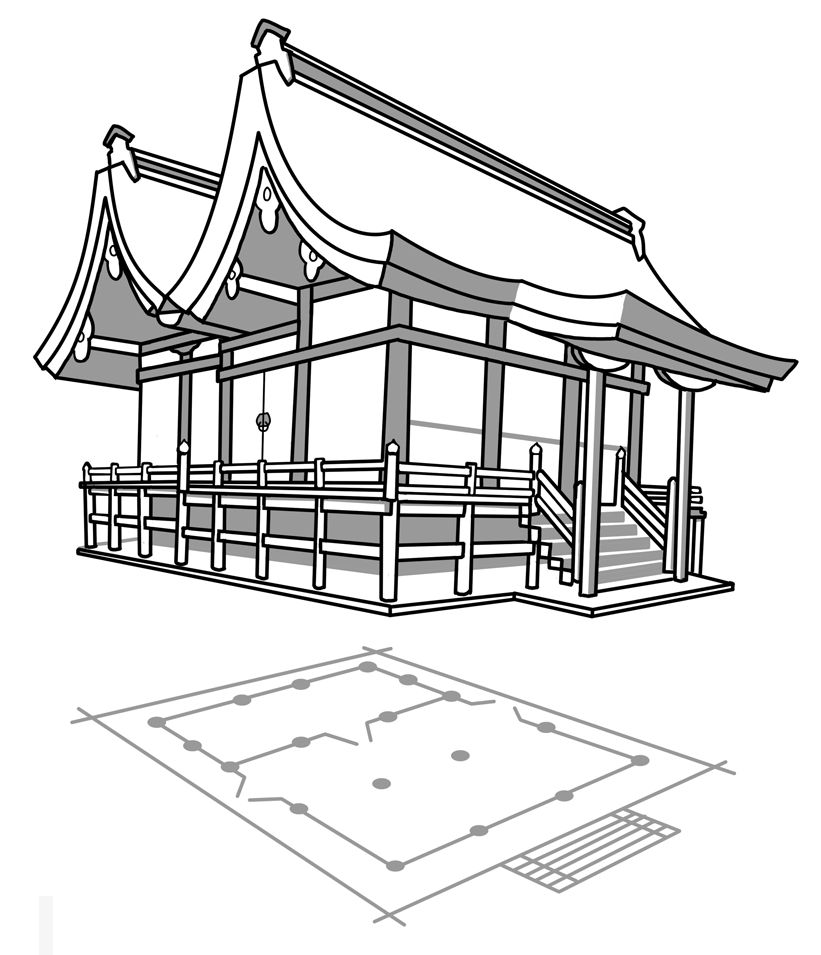The following is an abridged extract from Shinto Shrines by Joseph Cali and John Dougill, published by the University of Hawaii Press. Illustrations by Geoff Chioti.
******************************************************************
 Kasuga-zukuri:
Kasuga-zukuri:
Named after Kasuga Taisha in Nara, this is generally a small one-by-one-bay honden.
The bays are of different dimensions so that the width is about six feet while the depth is about eight and a half feet. The structure has a curving gable roof of cypress bark that features katsuogi and slender, rather curved chigi resembling crossed swords.
The entrance is in the center on the gabled (front) side, while a pent roof covers the entrance stairway. The woodwork is lacquered in red with details in black, and the walls are white plaster.
The staircase is made of solid square lengths of wood that span the full width of the building, with two square pillars rising from the base of the stair to support the pent roof.
Sumiyoshi-zukuri:

This style of honden has a gable roof with the entrance in the center of the gabled side.
The structure is two bays wide by four deep. The roofline is flat and has a deep overhang on all four sides. There are katsuogi and very tall chigi.
All the wooden members are painted vermillion and the wooden plank walls are painted white. It is thought to derive from the shape of the temporary ritual palace built for the enthronement rites of the emperor.
The building’s interior is divided into front and rear sections, with a wall and door parallel to the entrance separating the two.

Hachiman-zukuri: A unique style named for the original Usa Jingu Shrine in Kyushu and involving two parallel buildings standing so close to each other that they almost touch along the eaves.
A narrow structure connects the buildings and features doors at either end, creating a sort of covered corridor. A large rain gutter runs the length of the roof under the eaves and above the lower roof of the intermediate space. The effect is of one building with a double-gable roof.
The roof material is Hinoki Cypress bark, and there are no chigi or katsuogi. The woodwork is lacquered in vermillion, and the walls are white plaster. There are three doors on the entrance side (the non-gabled side of the front structure) and there may be a step canopy that extends over the stairway.
The front structure is called the outer sanctuary, and the rear structure is called the inner sanctuary. Hachiman shrines often do not have typical haiden (Offertory) standing in front of the main building. Instead, they usually have a single-bay romon where worshippers pray, and it is the face of the shrine with which most people are familiar.

Is the Hachiman style associated with shrines to the god of war? Or does the name come from something else?
Hello, Michael. The Hachiman style is indeed associated with ‘the god of war’, though some might like to identify the kami less aggressively as Protector of the Nation…